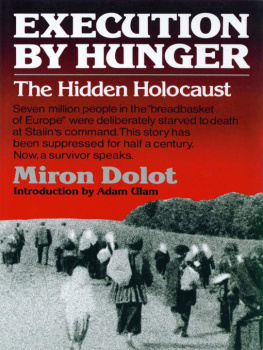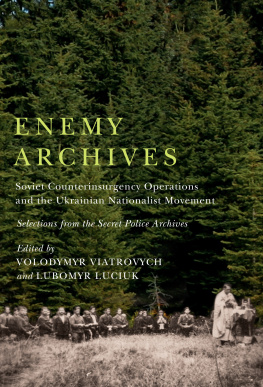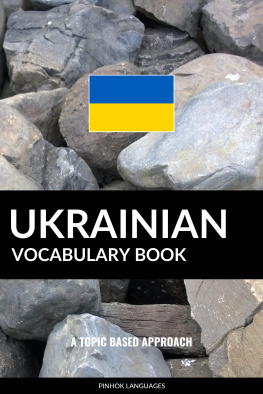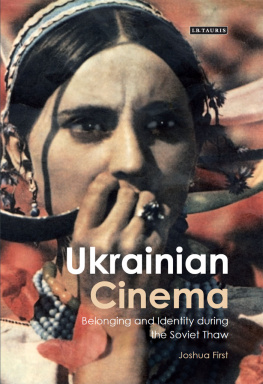Miron Dolot
EXECUTION BY HUNGER
The Hidden Holocaust
I DEDICATE THIS BOOK
to those Ukrainian farmers who were
deliberately
starved to death
during the Famine of 19321933,
my only regret being
that it is impossible for me
to fully describe their sufferings
THIS IS one of the rare eyewitness accounts of the Great Famine which struck several regions of the Soviet Union in 193233. The author experienced its horror as a young lad in a Ukrainian village, and Ukraine was one of the areas struck most cruelly by the disaster: it is estimated that five to seven million Ukrainians starved during that terrible year. Famine also raged over other parts of the USSR. In the Soviet Asian republic of Kazakhstan, half the native population fell victim to its ravages. But Ukraine, along with the North Caucasus (also severely stricken), is normally the most fertile area of the vast country, hence all the more paradoxical and poignant the tragedy that overwhelmed the second most populous nation of the Soviet Union.
Famines when caused by natural factors such as drought and crop failure are terrifying phenomena. But what endowed the one of 193233 with special horror was that it was both caused and compounded by the policies of the Soviet government or, more specifically, those of Stalin, by that time the absolute dictator and the main author and enforcer of the scheme that caused the deaths of millions of his countrymen, as well as untold sufferings to the entire rural population of the USSR.
The somber tale begins somewhat earlier. Since 1921the end of the Civil Warthe Soviet peasants had been left in relative peace, free to cultivate their own plots in return for the obligation to turn over part of their produce to the government at a price fixed by the latter. This policy led to a remarkable recovery of the Soviet countryside from the ravages of the Revolution and the Civil War. The Soviet Union, just as Imperial Russia before 1914, had become a major exporter of the grain. Yet, by the same token, this partial toleration of free enterprise in the countryside stuck in the throat of the more doctrinaire of the Communist rulers. Marxism-Leninism, they argued, taught that the existence of a multitude of small units in agriculture (the landed estates, of course, had been expropriated in the Revolution) was both inefficient and politically dangerous. Inefficient because small-scale production in agriculture was allegedly uneconomic, conducive to low productivity and absorbing too much of the labor force of the country. Dangerous, because unlike in the other branches of the economy, the government did not completely control the producers; if not paid adequate prices, they could withhold their products from the state.
Already in 192627, the Communist rulers began to squeeze the peasants and farmers (then constituting some 80 percent of the population): the more prosperous among them were subjected to heavy taxes; the prices for grain were arbitrarily cut by 20 percent; increased pressure and growing persecution of the most efficient producers lowered incentives to the peasantry as a whole to produce and sell grain. Had the government planned to cause a food shortage, it could not have devised a more effective way. And indeed in 1928 deliveries of foodstuffs to the state fell off sharply.
Instead of adopting what would have been the commonsense solution of the problem, i.e., raising the prices paid to the producers, the government embarked on a drastic campaign against the peasantry as a class. The year 1928 marked the beginning of what a Soviet poet writing during the period of de-Stalinization described as (the governments) war against the nation. The peasants were not to be bargained with through the market forces, or offered incentives to produce more. They were to be coerced and regimented, so that they would become not merely employees, but virtual slaves of the state, just as their ancestors in Imperial Russia before 1861 had been serfs of individual landlords.
The machinery for that transformation was to be the collectivization. The individual holdings of some 25 million peasant households were to be amalgamated into approximately 250 thousand collective and state farms. Land, cattle, farm implements, in some cases even their dwellings, were to be taken from the individuals and transferred, in theory to the peasant community, in fact to the state. In name the collective farm was an agrarian cooperative, in reality, as the reforms were being implemented between 1928 and 1930, it was much closer to a penal colony whose inmates work, cooperation, indeed the entire manner of life was prescribed from above and run by outsiders, often people quite ignorant both of agriculture and the local conditions. Mr. Dolot portrays vividly the havoc and confusion wrought by forcible collectivization in his native village. His picture must be magnified several thousandfold to obtain an idea of what was happening throughout the Soviet Union in those years.
Since the Communist Party did not trust any peasants, even those completely loyal to the regime, to enforce this servitude upon their fellows, it sent into the countryside 25,000 of its members, mostly young Communists, the thousanders of this book. And as the latter shows, most of them were fanatical Communists, indoctrinated to view the peasant as a petty capitalist and class enemy, and utterly without scruples when it came to browbeating the villagers to join the collective farm.
Faced with this challenge to his immemorial ways of life and what he viewed as the robbery of his property, the peasant, whether in Russia, Ukraine, or Central Asia, fought desperately against this spoliation. The government sought to facilitate its task by trying to split its victims and turn them against each other. The only ones who were against collectivization, and hence subject to persecution, the official line went, were the kulaks, i.e., the more prosperous stratum of the peasantry. Yet those whom official propaganda presented as such and as exploiters of their fellow villagers were for the most part simply more efficient producers, and as such the benefactors of the countryside and the nation, rather than the bloodsuckers and parasites of the opprobrious oratory of the Communist propagandists. With official blessing, the village riffraff was incited to acts of violence against the kulaks, they and their families were being thrown out from their homes, beaten, men occasionally lynched, and their property plundered.
Yet for all such divisive tactics, collectivization was being resisted by the peasantry as a whole. In their despair the villagers were drawn at times to terrorist acts against their oppressors. As against those incidents, the authorities instituted systematic terror against the entire class. The most active resisters were executed and their families exiled to the barren northern regions. In the course of one year, 192930, some five to eight million people were thus repressed. Others were resettled outside of their native regions, forced to clear swamps and eroded areas. The secret police and even army units were sent into the recalcitrant villages.
Unable to counter force with force, the peasants turned to passive resistance. One, and from the governments point of view the most dangerous, manifestation of it was the villagers slaughtering their livestock rather than surrendering it to the kolkhoz. In 1928, the USSR had 32 million horses; by 1934 the figure stood at 15.5 million. In January and February 1930 alone, 14 million head of cattle were destroyed. Confronted with this disaster, the government called a halt to its war. In what was surely a masterpiece of hypocrisy, Stalin in March 1930 announced that the local officials had












